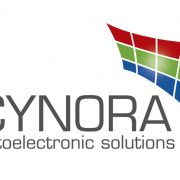CYNORA Achieves a New Milestone in Efficiency and Stability of Blue TADF Emitters for OLEDs
CYNORA, a leader in TADF (thermally activated delayed fluorescence) materials, has developed new material classes that combine both, high efficiency and long lifetime, for blue emission. With these new achievements, the company is on track to reach the performance requested by the OLED industry. The commercialization of CYNORA´s TADF materials is therefore still planned for the end of 2017.
Earlier this year, in May 2016, CYNORA had established two blue emitter systems where one of them showed a high efficiency while the other showed a long lifetime. During the last 6 months CYNORA has made further, significant progress by combining high efficiency and long lifetime in a single blue emitter system. In an OLED device, the new blue material reaches 14% EQE (external quantum efficiency) together with a lifetime of 420h (LT80, at 500 cd/m2, λ < 480 nm). With this performance, CYNORA has now shown that blue TADF emitters can reach OLED display specifications soon.
“Our constant progress on blue TADF emitters was made possible by our growing team of TADF experts and by the close collaboration with CYNORA’s customers” says Thomas Baumann, CSO at CYNORA, “We have developed several classes of high performance TADF materials which we are currently optimizing for market readiness at the end of next year.”
CYNORA’s dopants are fully organic and designed for existing vacuum deposition. The company will adapt the blue TADF emitters for solution processing in a second step. With its blue TADF technology CYNORA will enable device makers to provide OLED displays with significantly increased energy efficiency and higher display resolution.

